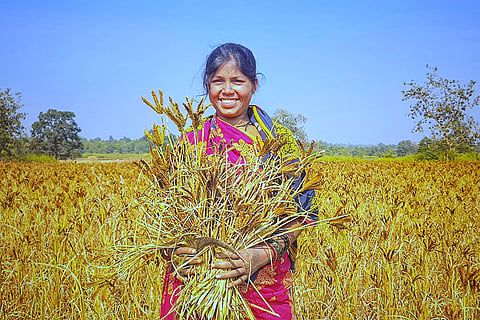A quiet yet unmistakable transformation is unfolding in Odisha’s most remote corners, with the state embracing a development model that places tribal and rural communities at its core.
Pathways To Progress: Odisha’s Story Of Transformation In Rural And Tribal Development
A quiet yet unmistakable transformation is unfolding in Odisha’s most remote corners, with the state embracing a development model that places tribal and rural communities at its core.
In a state where nearly 23% of the population belongs to the Scheduled Tribes, the focus has been on strengthening physical infrastructure, reviving neglected institutions, and anchoring indigenous populations within the broader economic agenda.
Here, inclusive growth is no longer a peripheral objective, but a strategic imperative.
Since taking office in 2024, the Mohan Charan Majhi-led administration has advanced a dual-focus agenda - to connect the unconnected, and empower the historically underserved.
This approach is steadily reshaping the development narrative across Odisha’s remote areas.

The roads to resilience
At the heart of this rural transformation is the expansion of Odisha’s road and bridge network through a suite of integrated programmes.
The Mukhya Mantri Sadak Yojana (MMSY) and its focused verticals have delivered impressive outcomes in 2024–25. These include the Connecting Missing Road Links, Connecting Unconnected Villages in Difficult Areas, and the Transferred Road Improvement Programme.
By January 2025, nearly 287 kilometres of road were completed under Connecting Missing Road Links, while Connecting Unconnected Villages in Difficult Areas, which targets LWE-affected tribal districts, added 102 kilometres, with 57 projects cleared for implementation.
Bridge connectivity, which is crucial for Odisha’s flood-prone districts, was improved under the Setu Bandhana Yojana, with 144 bridges being sanctioned during the same period.
A more focused approach towards the tribal population has emerged under the Pradhan Mantri Janjati Adivasi Nyaya Maha Abhiyan (PM-JANMAN), designed specifically to serve Particularly Vulnerable Tribal Groups (PVTG).
Altogether 40 roads and two bridges have been sanctioned under this scheme alone, allowing access to some of the state’s most remote communities.
The Rural Works Organisation allocated ₹97.64 crore for maintenance across nearly 893 km of roads and bridges this year. Bridge-cum-weir projects, comprising multi-functional structures supporting irrigation, aquifer recharge, and fisheries, also mark a shift towards infrastructure that supports livelihoods alongside.

Turning resources into results, with a push for rural sufficiency
The state’s development roadmap also extends to building resilient rural ecosystems. Funds from the District Mineral Foundation (DMF) and Odisha Mineral Bearing Areas Development Corporation (OMBADC) are directed towards essential infrastructure in mining-affected districts, including roads, housing, sanitation, and community buildings.
Odisha’s ₹200-crore Mukhyamantri Janajati Jeebika Mission is a great example for this pivot from welfare to sustainable economic empowerment. Conceptualised to reach 1.5 lakh tribal households, the scheme aids enterprise-based livelihoods rooted in agriculture, forest produce, animal husbandry, and allied sectors.
It is accompanied by a renewed push to secure forest rights and institutionalise cooperatives and producer groups with assured market access.
The Model Tribal Village Initiative, which aims to transform 500 tribal habitations over five years, serves as a convergence platform for central and state schemes. It reinforces Odisha’s commitment to building self-reliant communities through data-driven interventions.

Investing in Future Generations
The state is also focusing on education and skill development alongside building physical infrastructure. The Saheed Laxman Nayak Adarsh Ashram Vidyalaya Yojana is overhauling 705 residential schools for tribal children, upgrading facilities, enhancing nutrition, and introducing parent-led governance mechanisms.
The Madho Singh Haath Kharch Yojana provides annual financial support to over two lakh tribal students to prevent student attrition. This signals that retention, not just enrollment, is a policy priority. These efforts are gradually bridging the gap between tribal students and their mainstream peers, both in educational access and aspiration.
The synergy between Odisha’s rural infrastructure agenda and tribal welfare strategy reflects a governance model grounded in inclusion, continuity, and accountability.
Roads and bridges are now conduits of opportunity; schools are emerging as engines of aspiration. Once considered peripheral, tribal communities and rural settlements are increasingly positioned at the centre of Odisha’s development discourse.
By focusing on dignity, access, and opportunity, the Majhi government is not just implementing schemes, it is shaping a new future.